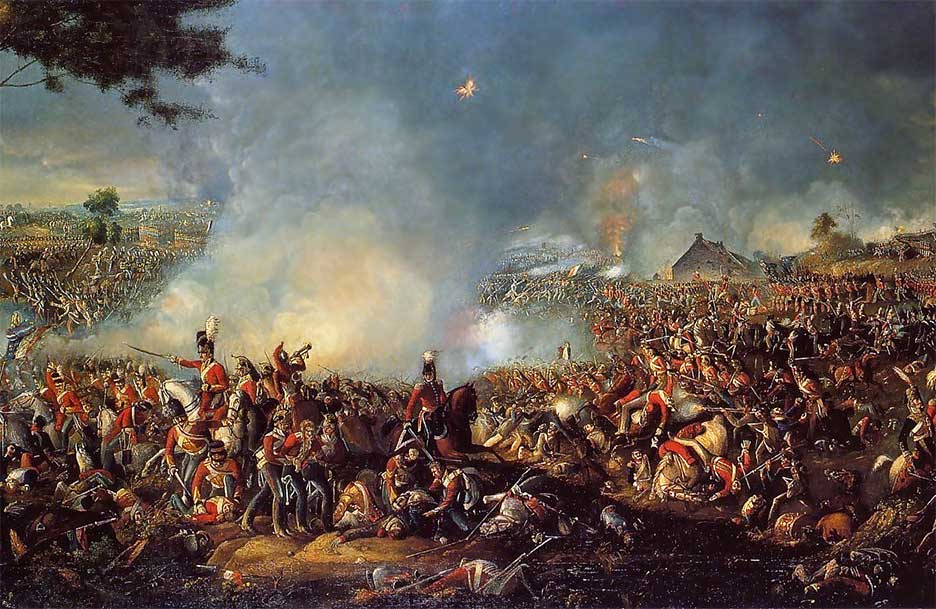Battle of Waterloo

Napoleon made a second attempt to seize control of France in 1815. He escaped prison and gained control of the French Army. The other nations of Europe sent large armies to fight him. At the Battle of Waterloo on June 18th, 1815 they defeated him.
News reached Napoleon Bonaparte at Elba of French discontent with renewed Bourbon rule. Napoleon decided to make another bid for power. On March 1, 1815, Napoleon landed in Cannes with 1,500 men. On March 20 he entered Paris and seized power. Thus began the 100 days. The major European powers united in opposing Napoleon, each committing 180,000. The commander of the Allied forces became British General Wellington. Leading the Prussian troops was Field Marshal Blücher. The French first attacked the Prussian Army at the Battle of Ligny. The French gained a tactical victory there. General Wellington moved his army back to Waterloo in Belgium. There on June 18th Napoleons French Army attacked. All afternoon they attacked but were unable to make progress. The Prussian Army came to the defense of the British, and by the evening, Napoleon committed the last of his reserved to the battle and failed. The British and Prussians then counterattacked and broke the French lines. Napoleon and his army were forced to flee back to Paris. . On June 22 he surrendered to allied forces. Napoleon spent the rest of his life imprisoned on the island of St. Helena in the South Atlantic. |
